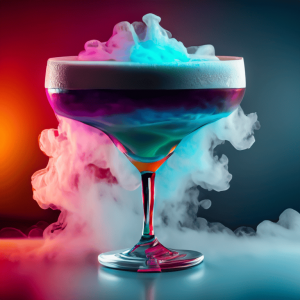Alcohol trends in 2024 are going to look a whole lot different than they have in years past.
That’s because the beverage alcohol industry is undergoing some pretty significant shifts in consumer behaviors, demands, and spending.
And they may change the future of the industry as we know it.
That’s why it’s crucial to understand all the alcohol industry trends that are reshaping the space, and, more importantly, how to adapt to maximize revenue.
Here are the 8 alcohol trends to look out for in 2024.
1. Economic headwinds will impact consumer spending
It’s no secret that these past few years haven’t been great for the economy. According to SipSource analyst Danny Brager, financial challenges like inflation, consumer debt, and rising interest rates are causing individuals to more carefully evaluate their spending choices.
That means beverage alcohol brands can likely expect consumer buying habits to change — and not for the better. With consumer spending likely to decrease, suppliers will need to up the ante for buyers. Here’s how to combat the downward tick:
- Ensure quality: Consumers tend to be willing to pay more for quality. Make sure the standard of your products is up to par with the price.
- Provide discounts: Offer promos to incentivize consumers to buy your products over those of more expensive competing brands.
- Increase marketing: To stay top of mind, you will likely need to ramp up marketing across all channels to get on consumers’ radars.
2. Younger generations will reduce alcohol consumption
The new generation’s drinking habits are shaking up the alcohol industry. According to Berenberg Research, members of Gen Z drink 20% less alcohol than generations before them. You can see these behaviors reflected in viral trends like Dry January and Sober October.
So, why exactly are younger consumers drinking less? There are numerous reasons for this generation-wide abstinence:
- Desire to pursue healthier lifestyles
- Avoiding judgment from family and friends
- Saving money
- Shift from alcohol to cannabis use
- Greater mental health awareness
- Drinking is no longer “cool”
Another reason Gen Z is reducing their alcohol intake is because many are “sober curious.” Sober-curious individuals don’t necessarily have any pressing reason to give up alcohol — they’re just curious about what an alcohol-free lifestyle would be like.
3. Non-alcoholic beverages will boom
Non-alcoholic (NA) beverages are becoming more mainstream — a fact we can largely attribute to the generational dip in alcohol consumption. In fact, the NA beverage market is projected to achieve a compound annual growth rate (CAGR) of 7.4% between 2024 and 2030.
More than just gaining popularity, NA drinks are also becoming more elevated in quality, variety, and flavor. Finally, consumers who enjoy the taste or social component of alcoholic drinks but not the physical or mental repercussions can indulge in great-tasting alternatives that rival them in quality.
4. Drink preferences will shift
According to SipSource, drink preferences are beginning to shift from wine and beer to spirits due to changing consumer tastes. This change can be heavily attributed to the emergence of younger and more diverse buyers.
Other alcohol trends you can expect to see in 2024 include:
- Coffee cocktails: Espresso martinis recently became a drink of choice, and this move to coffee-based beverages isn’t slowing down. This year, you can expect carajillos to take the stage. Popular in Mexico, this drink is a creamy blend of espresso and Licor 43.
- Fizzy cocktails: Fizzy drinks are having their time in the sun, with cocktails like the Aperol spritz, gin and tonic, and prosecco climbing in popularity.
- Canned cocktails: Ready-to-drink (RTD) cocktails experienced a huge spike during the pandemic, and their growth has only continued to increase. These premixed drinks require no preparation, making them convenient and relatively inexpensive.
- White wine: Though wine sales are projected to decrease, you can expect more success from white wines than reds. This is primarily thanks to female and Gen Z consumers.
5. Presentation is everything
In the age of social media and influencers, everything has to be the perfect photo op — the value of visual appeal cannot be overstated in 2024. That’s why consumers are flocking to drinks with presentational flair.
Unique glassware, creative flight arrangements, elaborate garnishes — people eat it up (or, more accurately, drink it up). Experimental drinks and themed bars are also becoming more popular as people search for more than just a drink — they want an experience.

Take liquid nitrogen cocktails, for example. These drinks arrive at the table dramatically flowing with plumes of silky white vapor. They offer a unique sipping experience and a flashy presentation that captivates customers. This is the level of visual appeal consumers will come to expect.
6. Brands will continue to diversify their products
Brands are no longer sticking solely to their areas of expertise. Instead, they’re starting to branch out into other drink markets to drive more revenue.
We saw this alcohol industry trend first take flight in 2019 when hard seltzers were all the rage. Once White Claw and Truly’s sales started to skyrocket, major brands like Bud Light, Corona, Smirnoff, and Natural Light started coming out with their own hard seltzers.
You can expect 2024 to bring more product diversification to the beverage alcohol industry — especially as new drink crazes emerge. With spirits projected to take the stage this year, perhaps wine and beer giants will move toward creating more RTD cocktails.
7. Direct-to-consumer sales will grow
E-commerce is more popular now than ever. The convenience of online shopping is gripping consumers across practically every industry — and bev-alc is no exception.
Naturally, the alcohol industry is more highly regulated than most, making it slower to embrace direct-to-consumer (DTC) sales. But 2024 seems to be a promising year for DTC alcohol delivery. According to a survey conducted by the Distilled Spirits Council of the United States (DISCUS), 80% of consumers think brands should be allowed to ship their products directly to consumers of the legal drinking age.
The e-commerce alcohol market is projected to increase by $3.4 billion between this year and 2028.
8. The industry will become more sustainable
Sustainability and environmental responsibility have become top of mind for consumers, calling for more eco-friendly initiatives across the bev-alc industry.
This is especially true of Gen Z consumers, who are famously vocal about saving the planet. This generation has even begun influencing their Gen X parents to consider more sustainable product options — today, nearly 90% of Gen X consumers are willing to spend extra money on sustainable products. Two years ago, this number was much lower at 34%. That’s a 164% difference!
Given the increased demand for sustainable products, we can expect to see more brands working to reduce their environmental footprint by investing in sustainable packaging and processes.
Prepare your marketing for the 2024 alcohol trends
Now that you know what to expect this year, it’s time to get your marketing machine ready. At Ansira, we specialize in helping beverage alcohol brands drive revenue while ensuring all campaigns are brand- and legal-compliant.
Get in touch with a marketing expert to learn more about our solutions.




